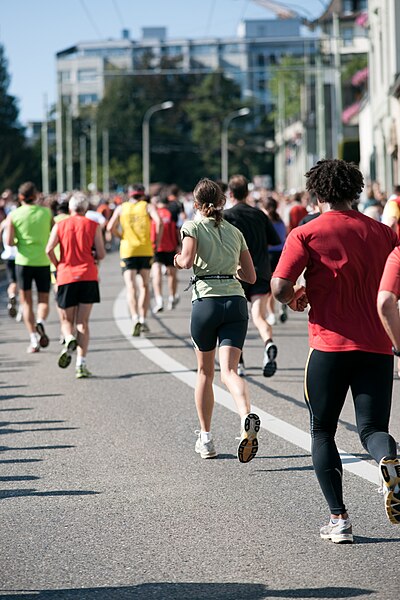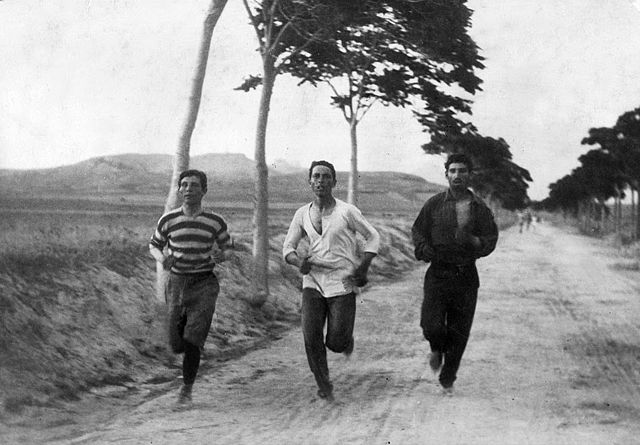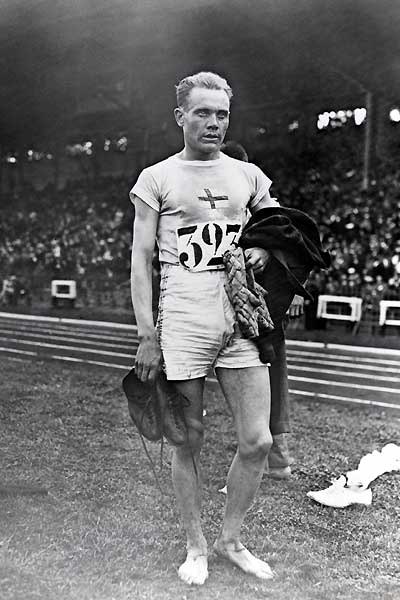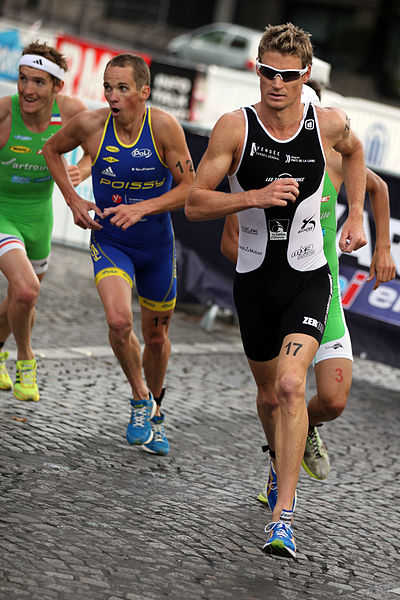The 10K run is a long-distance road running competition over a distance of ten kilometres. Also referred to as the 10K road race, 10 km, or simply 10K, it is one of the most common types of road running event, alongside the shorter 5K and longer half marathon and marathon. It is usually distinguished from the 10,000 metres track running event by stating the distance in kilometres, rather than metres.
The mass public race at the 2012 London 10000 race
Amateur runners completing the very large 2006 Peachtree Road Race
Mo Farah, Micah Kogo and Chris Thompson in the elite men's race at the London 10000 in 2010
Long-distance running, or endurance running, is a form of continuous running over distances of at least 3 km (1.9 mi). Physiologically, it is largely aerobic in nature and requires stamina as well as mental strength.
A group of amateur runners in a long-distance race in Switzerland.
Burton Holmes' photograph entitled "1896: Three athletes in training for the marathon at the Olympic Games in Athens".
Paavo Nurmi, also known as the "Flying Finn", at the 1924 Summer Olympics in Paris; at the time, he won Olympic gold in the 5,000-meter long-distance running.
Men in the 10 km run section of the 2011 Grand Prix de Triathlon in Paris.







